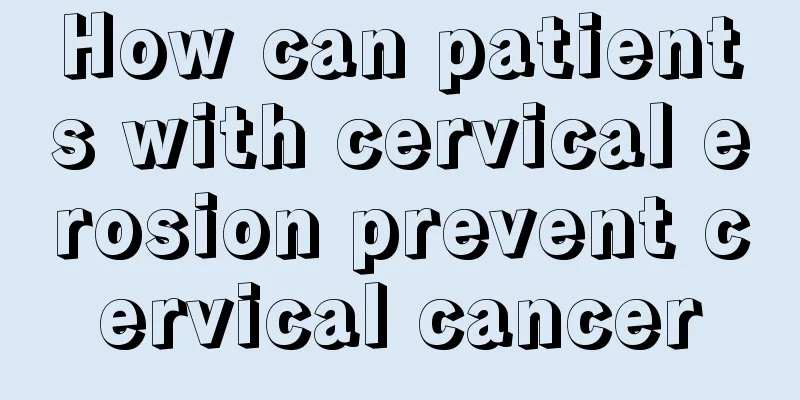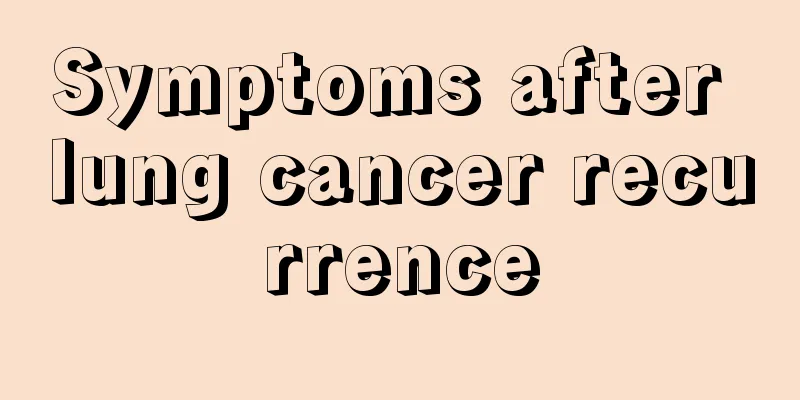What is the longest life expectancy of nasopharyngeal cancer patients and how to care for them

|
If you suffer from nasopharyngeal cancer, you should face it with an optimistic attitude. Here is an introduction to the longest life expectancy of nasopharyngeal cancer patients and how to care for patients. Nasopharyngeal carcinoma is a malignant tumor originating from the epithelium covering the nasopharyngeal mucosa. It is one of the most common malignant tumors in my country, with a high frequency of malignant transformation and an average natural survival time of 18.7 months. The onset is hidden and it is difficult to be detected in the early stage. The causes of nasopharyngeal carcinoma include Epstein-Barr virus infection, genetic factors, and some unhygienic diets. Post-treatment care for nasopharyngeal carcinoma mainly includes three aspects: skin care, oral care, and nasopharyngeal care. 1. Skin care: Patients need to keep the irradiated skin clean and dry, avoid using alkaline soaps, ointments, cosmetics, prevent mechanical stimulation, friction and scratching, avoid hot compresses, apply peppermint starch for local itching, and apply hydrogenated oil for mild exudation or ulceration. 2. Oral care: Patients need to pay attention to oral hygiene, brush their teeth with a soft-bristled toothbrush, and rinse their mouths with saline or Dobel's solution. It is best to brush and rinse your mouth after meals and before going to bed. Tooth extraction is not allowed within three years after radiotherapy, otherwise it will cause extensive bone necrosis. 3. Nasopharyngeal care: Patients need to keep the nasopharyngeal cavity clean and rinse the nasal cavity 2-3 times a day. In addition, 0.25% chloramphenicol eye drops can be used for nasal drops and chloramphenicol solution can be sprayed on the throat and oropharynx 2-3 times a day. The longest life span of a nasopharyngeal carcinoma patient can be very long or even completely cured, or it can be very short, a few months or even a few days. The specific life span of a patient varies from person to person. Regular follow-up examinations should be done for nasopharyngeal carcinoma. 80% of nasopharyngeal carcinoma recurrences occur within 2 years after radiotherapy, and 90% occur within 3 years. Therefore, frequent follow-up examinations should be conducted within 2-3 years after radiotherapy, once every 1-3 months, and then gradually extended; pay attention to oral hygiene, do not extract teeth within 2-3 years after radiotherapy, but fill them; strengthen nutrition, pay attention to rest, and exercise appropriately. |
<<: What causes cervical cancer in children
>>: What is breast cancer chemotherapy? What are the chemotherapy options for breast cancer?
Recommend
Symptoms of uterine cancer often manifest as increased vaginal discharge
Many people are very likely to experience symptom...
Does female uterine cancer have to be removed for treatment? How to take care of uterine cancer after surgery
Uterine cancer is one of the health killers of wo...
Coffee spot removal
In daily life, everyone hopes that their skin can...
What is the best time to treat atelectasis
Atelectasis is a disease that can be divided into...
What are the symptoms of rectal mucosal prolapse
Many people do not understand the symptoms of rec...
Is it good for children to drink milk before bed?
Nowadays, many families have only one child, and ...
Young people must read: Eight reasons why hair turns gray
1. Uneven nutritional intake Modern people are bu...
What kind of bra should I wear if I have a flat chest?
Whether the breasts are plump or not is an issue ...
Does pneumonia need timely treatment?
If you suffer from pneumonia, you must seek timel...
How to fade eyebrow tattoos?
Eyebrow tattooing is a beauty technique. Many peo...
What to do if the skin on my neck looks like chicken skin
Chicken skin is a very common skin problem, which...
What are the symptoms of thyroid nodules?
Thyroid nodules can manifest as different symptom...
Facial muscle depression
When girls are young, they especially look forwar...
How long can you live after being cured of stage II nasopharyngeal carcinoma
Nasopharyngeal carcinoma may be related to EB and...
Shouwu Tablets for the Treatment of White Spot Disease
Polygonum multiflorum is a relatively common medi...









